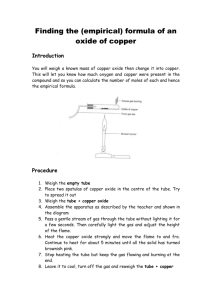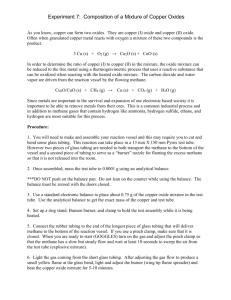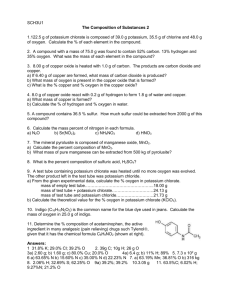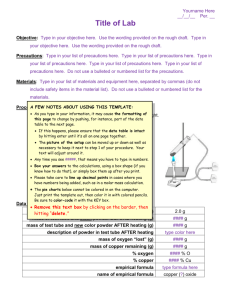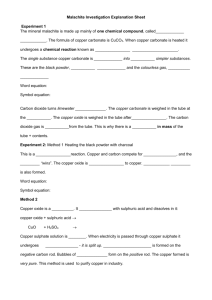Matthew Moss CHM-131-01 3-3-09 Lab 7 The Empirical Formula of
advertisement
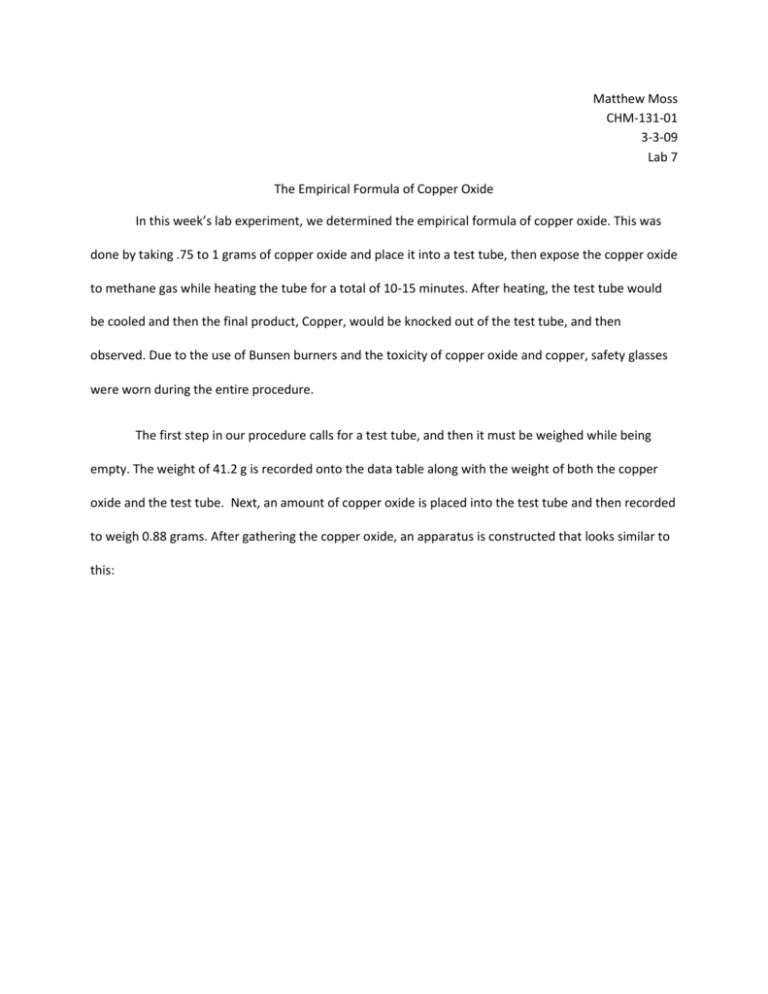
Matthew Moss CHM-131-01 3-3-09 Lab 7 The Empirical Formula of Copper Oxide In this week’s lab experiment, we determined the empirical formula of copper oxide. This was done by taking .75 to 1 grams of copper oxide and place it into a test tube, then expose the copper oxide to methane gas while heating the tube for a total of 10-15 minutes. After heating, the test tube would be cooled and then the final product, Copper, would be knocked out of the test tube, and then observed. Due to the use of Bunsen burners and the toxicity of copper oxide and copper, safety glasses were worn during the entire procedure. The first step in our procedure calls for a test tube, and then it must be weighed while being empty. The weight of 41.2 g is recorded onto the data table along with the weight of both the copper oxide and the test tube. Next, an amount of copper oxide is placed into the test tube and then recorded to weigh 0.88 grams. After gathering the copper oxide, an apparatus is constructed that looks similar to this: Next, the methane gas is allowed to fill the test tube completely for 20 seconds, and then the pilot is lit to rid of the access methane gas. A Bunsen burner is then used to heat the test tube of copper oxide for about 10 to 15 minutes and then cooled to room temperature. After cooling, the test tube is then weighed and recorded as 41.95 g. The final product is then carefully knocked out of the test tube and observed to be a black chunk. After further observation, it is recognized as pure copper after being rubbed onto a counter top, displaying a shiny, reddish copper surface on the rubbed side. In conclusion, from the data that we had recorded during this lab experiment, we were able to determine the empirical formula of copper oxide which was Cu = 1.45 and O = 1. What this means is that is the simplest formula which shows the numbers of atoms of each element in the compound. This means that there are 1.45 atoms of Cu for every 1 atom of Oxygen. Data Table: 1) Mass of empty test tube 41.2 g 2) Mass of test tube plus copper oxide 42.08 g 3) Mass of copper oxide 0.88 g 4) Mass of test tube plus copper after heating 41.95 g 5) Mass of copper remaining 0.75 g 6) Mass of oxygen that reacted 0.13 g 7) Moles of copper 0.0118 m 8) Moles of oxygen 0.0081 m 9) Empirical formula: Cu = 0.0118/.0081= 1.457 O = 0.0081/0.0081 = 1
